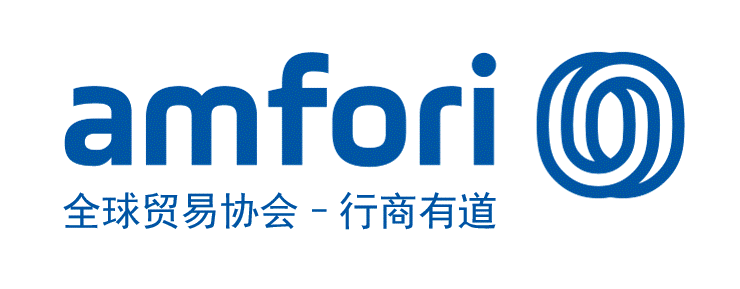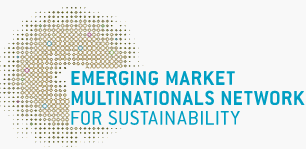An observation report on low-carbon transition released on COP28
2023-12-19China Sustainability TribuneHu Wenjuan0

On December 11 in Dubai, the Observation Report on Low-Carbon Transition of Enterprises in China 2023 (hereinafter referred to as the Report) was officially released on a side event themed "Accelerating Low-carbon Actions, and Converging Social Powers to Tackle Climate Change" on COP 28 China Pavilion. The Report is the second in the Report on Shaping the Low-carbon Leadership of Chinese Enterprises by GoldenKey series released by China Sustainability Tribune on COP26 China Pavilion in 2021.
The Report analyzes and provides insights into the low-carbon practices of enterprises in China that participated in the GoldenKey-SDG Solutions Campaign from 2020 to 2023. It aims to showcase and analyze the progress and distinctive actions of Chinese enterprises since China put forward the 30·60 Decarbonization Goal (to peak carbon dioxide emission by 2030 and achieve carbon neutrality by 2060). It focuses on sharing corporate practices and experience of low-carbon transitions and aims to enhance global understanding of the commitment of China’s business community to low-carbon development.
The Report points out that under China's policy requirements and supervision, companies face pressures from green supply chains, new green trade regulations, as well as foot voting in capital markets and consumer markets. The carbon reduction logic of business is evolving drastically from mere responsibility and brand image to strategic adjustment and low-carbon value creation. In the GoldenKey Campaign, this shift is evident. These agile, pioneering companies regard green, low-carbon strategies as long-term, beneficial, and sustainable business models. Their low-carbon actions signal the future of business.
Through analyzing standout practices from the GoldenKey Campaign and engaging with enterprises, this Report identifies five characteristics of the low-carbon transition of enterprises in China.
1. Harnessing strategic guidance to boost internal momentum for development
Although most enterprises are yet to develop a clear carbon reduction strategy or an action plan for carbon peaking and carbon neutrality, and some face challenges in setting targets and conducting carbon accounting, the Report reveals several findings:
First, under the guidance of the State-owned Assets Supervision and Administration Commission of the State Council (SASAC), central SOEs are leading in formulating action plans on carbon peaking and carbon neutrality. Despite some problems in the development of these plans, these enterprises are setting a strong example for others.
Second, most enterprises have recognized the value of the carbon reduction strategy, driven not only by policy but also by market factors such as supply chains, capital markets, and consumers, leading to the internalization of these drivers.
Third, top-performing enterprises have established robust low-carbon governance structures to effectively materialize their low-carbon strategy. They enforce low-carbon initiatives through internal assessments as well as incentive and punishment systems.
Fourth, leading enterprises are integrating low-carbon strategies into their businesses. They are actively engaging in low-carbon product design, service innovation, and solution development, striving for the coordinated growth of both commercial and environmental values.
First, under the guidance of the State-owned Assets Supervision and Administration Commission of the State Council (SASAC), central SOEs are leading in formulating action plans on carbon peaking and carbon neutrality. Despite some problems in the development of these plans, these enterprises are setting a strong example for others.
Second, most enterprises have recognized the value of the carbon reduction strategy, driven not only by policy but also by market factors such as supply chains, capital markets, and consumers, leading to the internalization of these drivers.
Third, top-performing enterprises have established robust low-carbon governance structures to effectively materialize their low-carbon strategy. They enforce low-carbon initiatives through internal assessments as well as incentive and punishment systems.
Fourth, leading enterprises are integrating low-carbon strategies into their businesses. They are actively engaging in low-carbon product design, service innovation, and solution development, striving for the coordinated growth of both commercial and environmental values.
2. China's approach to green development through coordinated efforts
Chinese enterprises pioneer a distinctive approach to carbon reduction, and adopt a parallel model that underscores the importance of collaborative efforts.
First, carbon reduction. Many enterprises are enhancing the efficiency of traditional energy and shifting towards clean energy to reduce carbon emissions. Notably, large energy and industrial enterprises are focusing on the innovation and application of carbon negative technologies, like carbon capture, utilization, and storage (CCUS).
Second, pollution control. Enterprises, no matter large or small, are actively engaging in sewage treatment, waste heat recovery from exhaust gas, solid waste recycling, and plastic pollution control. Some leading enterprises are incorporating recycling concepts early in product design, enhancing resource utilization efficiency from the source.
Third, greening initiatives. Enterprises are investing in afforestation, ecological restoration of mangroves and wetlands, and marine protection, contributing to natural carbon sinks. The awareness and recognition of the synergy between biodiversity protection and carbon emission reduction is raised.
Fourth, growth. Carbon reduction is more than a public welfare campaign for enterprises. It is a growth strategy. Market mechanisms like carbon trading, green financing and investment, low-carbon products and innovative solutions are providing businesses with enduring, endogenous incentives for green transition. Additionally, emerging business models based on resource recycling and sharing, such as shared mobility and the secondhand economy, are gaining popularity and opening new avenues for growth.
First, carbon reduction. Many enterprises are enhancing the efficiency of traditional energy and shifting towards clean energy to reduce carbon emissions. Notably, large energy and industrial enterprises are focusing on the innovation and application of carbon negative technologies, like carbon capture, utilization, and storage (CCUS).
Second, pollution control. Enterprises, no matter large or small, are actively engaging in sewage treatment, waste heat recovery from exhaust gas, solid waste recycling, and plastic pollution control. Some leading enterprises are incorporating recycling concepts early in product design, enhancing resource utilization efficiency from the source.
Third, greening initiatives. Enterprises are investing in afforestation, ecological restoration of mangroves and wetlands, and marine protection, contributing to natural carbon sinks. The awareness and recognition of the synergy between biodiversity protection and carbon emission reduction is raised.
Fourth, growth. Carbon reduction is more than a public welfare campaign for enterprises. It is a growth strategy. Market mechanisms like carbon trading, green financing and investment, low-carbon products and innovative solutions are providing businesses with enduring, endogenous incentives for green transition. Additionally, emerging business models based on resource recycling and sharing, such as shared mobility and the secondhand economy, are gaining popularity and opening new avenues for growth.
3. Building partnerships for carbon reduction across the value chain
First, multinational corporations in China emphasize carbon reduction across their entire value chains. For example, Nestlé China and Dell Technologies are focusing on carbon reduction across their entire supply chains from sourcing raw materials from origin, factory R&D and design, production and manufacturing, to storage, logistics, product use, and recycling. Multinational brands significantly influence their upstream suppliers in energy and industrial transformation and guide consumers towards low-carbon consumption awareness and habits.
Second, technology firms, financial institutions, and manufacturers are capitalizing on market opportunities by innovating in digital solutions and sustainable products to assist other industries and consumers in reducing carbon footprints, thus achieving environmental and economic gains.
Third, partnerships are being formed between enterprises and organizations. For example, China National Textile and Apparel Council (CNTAC) issued the China Climate Stewardship 30·60 Net Zero Accelerating Plan. China Sustainability Tribune, in collaboration with the business community, launched the Global Sustainable Consumption Initiative. These initiatives can foster public support for green and sustainable development, encouraging dialogue, building consensus, and inspiring more corporate actions. While most enterprises currently focus carbon-neutral efforts on their own operations, and actions across the whole supply chain lag, the GoldenKey SDG solutions indicate the endeavors and explorations of leading enterprises in this area.
Second, technology firms, financial institutions, and manufacturers are capitalizing on market opportunities by innovating in digital solutions and sustainable products to assist other industries and consumers in reducing carbon footprints, thus achieving environmental and economic gains.
Third, partnerships are being formed between enterprises and organizations. For example, China National Textile and Apparel Council (CNTAC) issued the China Climate Stewardship 30·60 Net Zero Accelerating Plan. China Sustainability Tribune, in collaboration with the business community, launched the Global Sustainable Consumption Initiative. These initiatives can foster public support for green and sustainable development, encouraging dialogue, building consensus, and inspiring more corporate actions. While most enterprises currently focus carbon-neutral efforts on their own operations, and actions across the whole supply chain lag, the GoldenKey SDG solutions indicate the endeavors and explorations of leading enterprises in this area.
4. Accelerating low-carbon transition through digital empowerment
Enterprises actively integrate digitalization with green transition and have achieved initial outcomes. First, digitalization facilitates climate actions. Chinese enterprises, through developing and adopting digital technologies like smart factories, intelligent agriculture, shared travel, and development and application of big data, are enhancing their operational quality and efficiency, optimizing resource allocation, and improving low-carbon development. Besides, the integration of technologies like 5G, cloud, and AI in early warning and monitoring systems significantly uplifts climate risk management of enterprises and the whole society.
Second, digitalization enhances carbon data management. Leveraging digital technologies, enterprises can gather and analyze carbon data accurately and efficiently. Also, they are able to monitor and analyze carbon emission data in real time and adopt countermeasures at any time. While helping enterprises disclosing carbon data in an open and transparent manner, it facilitates complex green supply chain management.
Responding to market demand, technology firms and third-party consulting agencies are developing innovative carbon data management systems, energy efficiency software, and other products and services, empowering various sectors and the whole society to achieve low-carbon development.
Second, digitalization enhances carbon data management. Leveraging digital technologies, enterprises can gather and analyze carbon data accurately and efficiently. Also, they are able to monitor and analyze carbon emission data in real time and adopt countermeasures at any time. While helping enterprises disclosing carbon data in an open and transparent manner, it facilitates complex green supply chain management.
Responding to market demand, technology firms and third-party consulting agencies are developing innovative carbon data management systems, energy efficiency software, and other products and services, empowering various sectors and the whole society to achieve low-carbon development.
5. Achieving preliminary results in climate adaptation efforts
Chinese enterprises are currently at the early stages of climate adaptation management, with a low rate of risk identification. Their risk management mostly remains qualitative and fails to fully assess the financial impact of climate risks or incorporate them into daily operational risk control systems. Moreover, risk management is yet to be integrated with financial data. In the GoldenKey SDG Solutions, only a few enterprises focus on climate adaptation, yet the characteristics of their adaptation practices can still be observed.
First, in the realm of natural disaster early warning, prevention, and treatment, financial firms, Internet companies, and communication operators have developed risk management platforms and post-disaster emergency communication systems. The role of meteorological services in supporting critical economic and social sectors like industry and infrastructure is increasingly recognized and leveraged.
Second, the current scale of agricultural adaptation measures is insufficient to meet sustainable development goals.
Third, enterprises and their respective industries lack their own assessments of vulnerability and exposure to climate change, and there is a significant gap in devising and implementing adaptation plans to mitigate adverse impacts.
The Report pays special attention to the overseas green and low-carbon development practices of Chinese enterprises going globally and found:
Firstly, as a leading force among Chinese enterprises going globally, central SOEs have undertaken the crucial responsibility of shaping the image of Chinese companies committed to green development abroad. They accomplish this through involvement in philanthropic activities, conservation efforts for flora and fauna, promotion of renewable energy, and advancement of green technologies, among other efforts.
Secondly, emerging economies and developing nations, heavily reliant on traditional energy sources, encounter challenges in their transition toward sustainability. Chinese enterprises, leveraging their economic and technological strengths, engage in diverse collaborations with partner countries across renewable energy, green infrastructure, green transportation, and other domains. In doing so, they not only secure international business opportunities but also curb high emissions caused by the industrialization and urbanization in the countries where they operate, thereby contributing to local low-carbon development.
Thirdly, overseas industrial parks serve as examples of China’s economic development model and play a crucial role in showcasing the achievements of China’s efforts to promote green and low-carbon development globally. While there is still significant room for improvement in the green and low-carbon levels of these overseas industrial parks, they have made considerable progress in steering energy and economic transitions towards low-carbon practices. They are actively involved in constructing green infrastructure, promoting resource recycling, and advocating for green initiatives. These efforts contribute to bolstering the global influence and soft power of Chinese enterprises expanding abroad.
The Report mentions that despite much progress and achievement in the low-carbon transformation of enterprises, many businesses still suffer from inadequate impetus, unclear pathways for action and inadequate supporting systems. Accordingly, it suggests that enterprises need to enhance capabilities, shift mindset from cost to investment with long-term vision and take active actions one the one hand; enterprises should strengthen external collaboration and actively collaborate with the government, industry associations, and other stakeholders to establish a sound ecosystem for low-carbon development; and other stakeholders, beyond businesses, are recommended to enhance the sound external environment for corporate low-carbon transformation through means like enhanced policy support, financial innovation, unified standards and talent cultivation.
Exemplary cases of corporate carbon reduction actions are also included in the research, such as Sinopec Group's investment and actions in developing hydrogen power and CCUS projects and practices of advancing the Green Middle East Initiative; JD Logistics' efforts in fostering a climate-resilient supply chain; China Everbright Bank's endeavors in landing a portfolio of green finance measures; and the work of State Grid Wuxi Power Supply Company on advancing low-carbon energy transition with multi-dimensional solutions.
First, in the realm of natural disaster early warning, prevention, and treatment, financial firms, Internet companies, and communication operators have developed risk management platforms and post-disaster emergency communication systems. The role of meteorological services in supporting critical economic and social sectors like industry and infrastructure is increasingly recognized and leveraged.
Second, the current scale of agricultural adaptation measures is insufficient to meet sustainable development goals.
Third, enterprises and their respective industries lack their own assessments of vulnerability and exposure to climate change, and there is a significant gap in devising and implementing adaptation plans to mitigate adverse impacts.
The Report pays special attention to the overseas green and low-carbon development practices of Chinese enterprises going globally and found:
Firstly, as a leading force among Chinese enterprises going globally, central SOEs have undertaken the crucial responsibility of shaping the image of Chinese companies committed to green development abroad. They accomplish this through involvement in philanthropic activities, conservation efforts for flora and fauna, promotion of renewable energy, and advancement of green technologies, among other efforts.
Secondly, emerging economies and developing nations, heavily reliant on traditional energy sources, encounter challenges in their transition toward sustainability. Chinese enterprises, leveraging their economic and technological strengths, engage in diverse collaborations with partner countries across renewable energy, green infrastructure, green transportation, and other domains. In doing so, they not only secure international business opportunities but also curb high emissions caused by the industrialization and urbanization in the countries where they operate, thereby contributing to local low-carbon development.
Thirdly, overseas industrial parks serve as examples of China’s economic development model and play a crucial role in showcasing the achievements of China’s efforts to promote green and low-carbon development globally. While there is still significant room for improvement in the green and low-carbon levels of these overseas industrial parks, they have made considerable progress in steering energy and economic transitions towards low-carbon practices. They are actively involved in constructing green infrastructure, promoting resource recycling, and advocating for green initiatives. These efforts contribute to bolstering the global influence and soft power of Chinese enterprises expanding abroad.
The Report mentions that despite much progress and achievement in the low-carbon transformation of enterprises, many businesses still suffer from inadequate impetus, unclear pathways for action and inadequate supporting systems. Accordingly, it suggests that enterprises need to enhance capabilities, shift mindset from cost to investment with long-term vision and take active actions one the one hand; enterprises should strengthen external collaboration and actively collaborate with the government, industry associations, and other stakeholders to establish a sound ecosystem for low-carbon development; and other stakeholders, beyond businesses, are recommended to enhance the sound external environment for corporate low-carbon transformation through means like enhanced policy support, financial innovation, unified standards and talent cultivation.
Exemplary cases of corporate carbon reduction actions are also included in the research, such as Sinopec Group's investment and actions in developing hydrogen power and CCUS projects and practices of advancing the Green Middle East Initiative; JD Logistics' efforts in fostering a climate-resilient supply chain; China Everbright Bank's endeavors in landing a portfolio of green finance measures; and the work of State Grid Wuxi Power Supply Company on advancing low-carbon energy transition with multi-dimensional solutions.

Scan the QR code for the soft copy

Best Practices
- The 100-year brand — Air Liquide also has a sense of juvenile
- Beijing Public Transportation Corporation: Developing green transportation to build a harmonious and livable capital
- CGN: Building a modern factory in barren deserts and developing a new win-win cooperation model along “Belt and Road”
Upcoming Event

All the materials on the site “Source: XXX (not from this site)” have been reprinted from other media. They do not imply the agreement by the site.
All the materials with “Source: CSR-China Website” are the copyright of CSR-China Website. None of them may be used in any form or by any means without permission from CSR-China Website.
GoldenBee Official WeChat
Copyright © Csr-china.net All Right Reserved.
京ICP备19010813号










